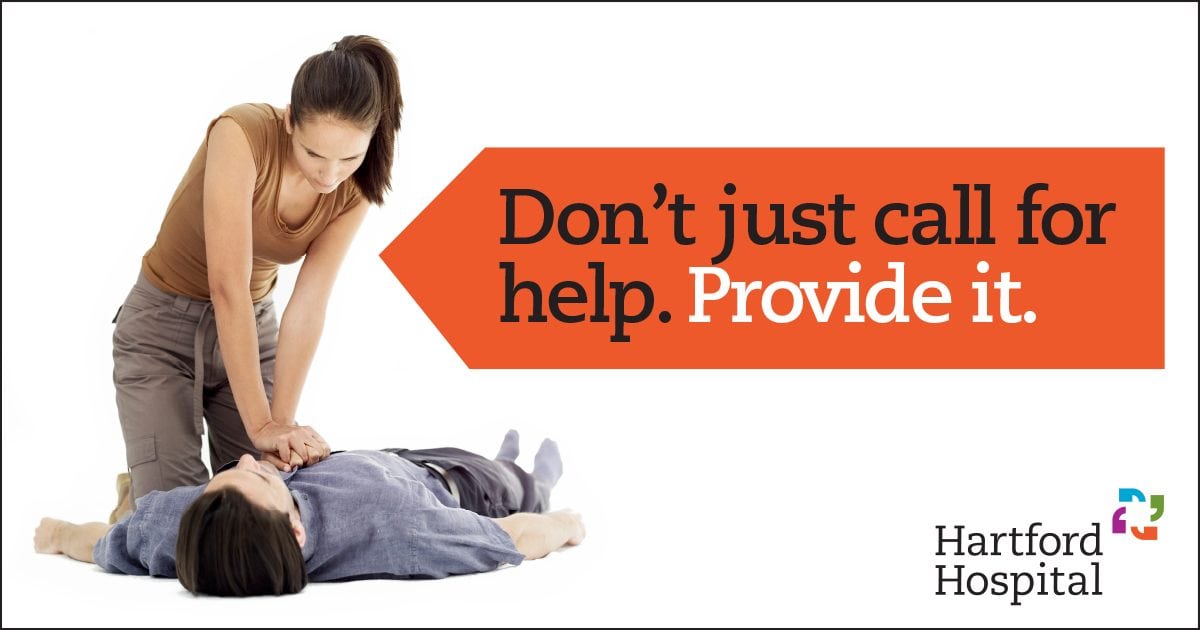Did you know that you no longer have to perform “mouth-to-mouth” resuscitation while performing CPR? Stephen Donahue, program director for the Center for Education, Simulation and Innovation (CESI) at Hartford Hospital explains.
Q: How does “hands-only” CPR work?
A: Hands only CPR is CPR without mouth to mouth breaths. It is recommended for use by people who see a teen or adult suddenly collapse in and out of a hospital setting such as a home, work or school. It consists of two easy steps:
- Call 911 (or send someone to do that)
- Push hard and fast in the center of the chest
Q: When is CPR most effective?
A: Cardiac arrest is an irregular heartbeat that disrupts the flow of blood to your vital organs it is the leading cause of death each year more 350,000 out of hospital cardiac arrest occur in the United States. When a person suffers a cardiac arrest survival depends on immediately receiving CPR. According to the American Heart Association, about 90% of people who suffer cardiac arrest die. CPR performed immediately can double or even triple the chance of survival.
Q: What is a “lifesaving song?”
A: A lifesaving song is any song with a meter or 120-125 beats per minute. That’s the ideal rhythm for use during CPR. People are encouraged to determine a favorite song that falls into that tempo in advance so that they can use it when they need to perform CPR. Songs like “Stayin’ Alive” by the Bee Gees and “Don’t Stop Believin'” by Journey are a couple great examples.
Not sure about your lifesaving song? Take the quiz at www.CPRLifesavers.org.

